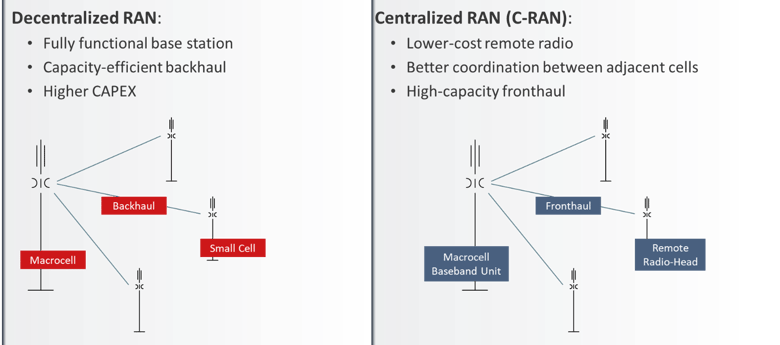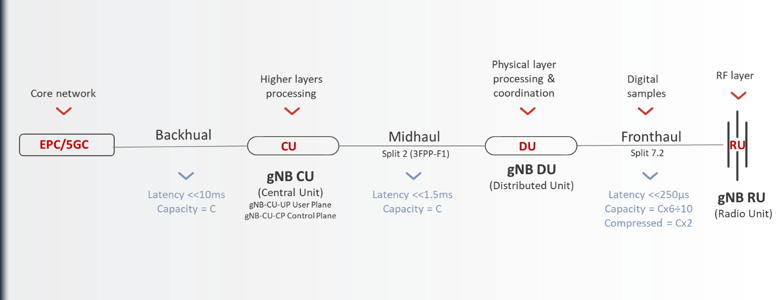|
The fronthaul transmission market is forecasted to triple in the next five years, led by the growing dominance of fronthaul transmission in 5G networks. |
Recent research from Omdia forecasts that the global fronthaul transmission equipment market will almost triple, from just over $700M in 2019 to over $2B in 2024. This growth is predominantly attributed to 5G fronthaul, which is expected to account for 73% of this market.
What makes fronthaul such a rapidly growing market segment, and why is it significantly more dominant in 5G than it was (and is) in the 4G and 3G domains?
In order to understand that, first we need to understand what’s fronthaul.
And, if we look a bit deeper, fronthaul is all about creating simpler, smaller and cheaper radio units (dubbed radio units (RUs) in 5G, and remote radio heads (RRHs) or remote radio units (RRUs) in 4G).
Those radio units support massive deployment of new sites, thanks to their affordable price. This affordable price, though, comes with, well, a price.
And that price is connectivity requirements – specifically capacity and latency.
In fact, these are the main differences, or trade-offs, between the two leading approaches to network densification – decentralized RAN and centralized RAN (C-RAN) – as illustrated below:

When focusing on C-RAN, fronthaul adoption has been limited by the huge amount of capacity required for connecting RRH/RRU/RU sites. This has led to a common practice in which fronthaul has been implemented almost solely where fiber connectivity is available.
Fronthaul protocols such as CPRI and OBSAI called for up to 10Gbps of connectivity per remote radio unit, as those used an extremely basic RRH/RRU in what is known as functional split 8 (or simply split 8). In such a case, most of the functionality is implemented in the baseband unit and only the RF function is handled by the remote unit.
This split was deemed unfeasible and unscalable for 5G networks utilizing higher RAN frequency bands and wider channels. This led to an architectural evolution introducing new options for functional splits, as well as new network elements, as illustrated below:

Another major change in 5G architecture, when compared to 4G, is the massive growth in capacity density (the total capacity required in order to service a given area). As a result, there is a need for higher frequency bands for the RAN (mid-bands and millimeter wave bands). Those two changes led to a need for massive network densification, with the addition of up to five times the number of 5G cell sites compared to 4G cells in urban areas.
And those two developments, namely the change in network architecture and the need for network densification, led to the forecasted growing dominance of fronthaul transmission in the fairly complex transmission mix required in 5G networks.
In upcoming posts we will discuss in more detail specific requirements and planning considerations for fronthaul transmission in a 5G network environment.
To learn more


